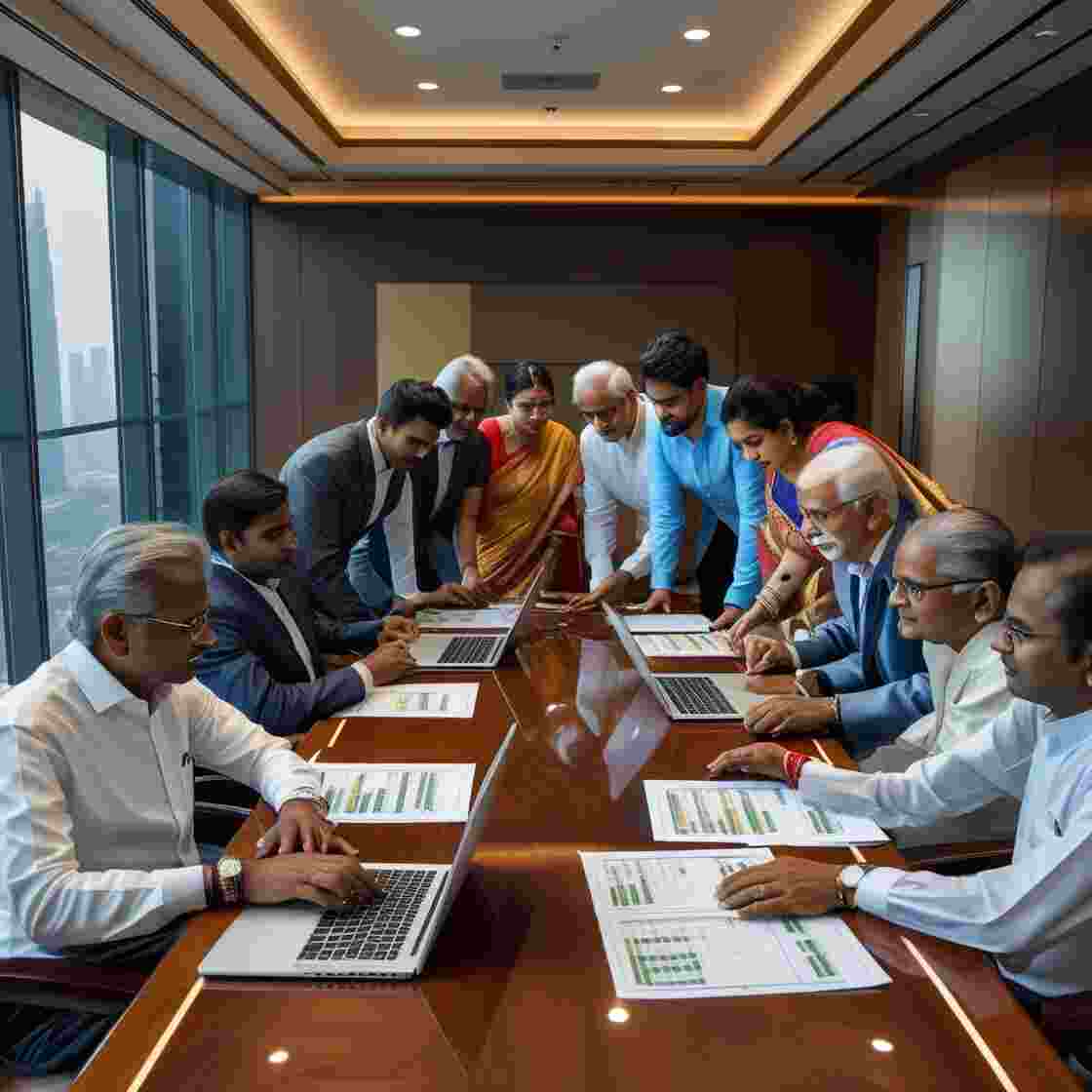Discover the 7 key things to know about new tax regime for FY 2024-25. Learn tax slabs, deductions, and switching options to optimize your ITR filing. Save tax now! #new tax regime 2025, #new tax regime vs old tax regime, #deductions under new tax regime 2025,#Form 10-IEA filing, #section 87A rebate new tax regime

Introduction
It might be difficult to file income taxes in India, particularly since the new tax system was implemented. The new tax regime, which was introduced in Budget 2020 and will be the default option starting in FY 2023-24 (AY 2024-25), streamlines tax computations but restricts deductions in comparison to the previous tax regime. In preparation for FY 2024–2025 (AY 2025–2026), taxpayers understanding the key things to know about new tax regime is essential for salaried employees, professionals, and business owners. This article lays out the fundamentals to help you save money and maintain compliance, whether you’re submitting your ITR for the first time or choosing between the new and old tax regimes.
This blog dives into seven key things to know about new tax regime, discussing tax slabs, deductions, possibilities for switching, and the differences between the current tax system and the previous one. You can reduce your tax liability by making wise judgements if you understand these things. Let’s examine the new tax laws and how they affect your financial planning.
7 Key Things to Know About New Tax Regime
1. Default Status of the New Tax Regime
One of the most critical key things to know about new tax regime is its position as the default tax system for Hindu Undivided Families (HUFs) and individuals since FY 2023–2024. Taxpayers are automatically enrolled in the new tax regime unless they specifically want to remain in the old tax regime by submitting Form 10-IEA. The goal of this change, which was announced in Budget 2023, is to make tax compliance easier, but taxpayers must choose whether the new tax system fits with their financial objectives.
In contrast, the previous tax system permitted a large number of deductions but required intricate record-keeping. For instance, salaried workers who claim Section 80C investments or the House Rent Allowance (HRA) would favour the previous tax system. Understanding this default status is among the key things to know about new tax regime to avoid unintended tax calculations during ITR filing.
2. Concessional Tax Slabs in the New Tax Regime
The new tax regime offers simplified tax slabs with lower rates to benefit low- and middle-income earners. For FY 2024-25, the tax slabs under the new tax regime are:
- Up to ₹3,00,000: Nil
- ₹3,00,001–₹7,00,000: 5% (after standard deduction)
- ₹7,00,001–₹10,00,000: 10%
- ₹10,00,001–₹12,00,000: 15%
- ₹12,00,001–₹15,00,000: 20%
- Above ₹15,00,000: 30%
In comparison, the old tax regime has different slabs:
- Up to ₹2,50,000: Nil
- ₹2,50,001–₹5,00,000: 5%
- ₹5,00,001–₹10,00,000: 20%
- Above ₹10,00,000: 30%
Introduced in Budget 2023, the new tax regime offers salaried employees a standard deduction of ₹50,000 and a larger exemption level (₹3 lakh vs. ₹2.5 lakh). These concessional rates are a cornerstone of the key things to know about new tax regime, making it appealing for those with minimal deductions. Those that take advantage of several exemptions, however, might save more money on taxes under the previous system.
3. Restricted Deductions Under the New Tax Regime
The new tax regime’s restricted deductions in comparison to the previous one are one of its distinguishing characteristics. This is one of the key things to know about new tax regime for taxpayers used to claiming advantages such as Section 80D (health insurance) or Section 80C (₹1.5 lakh for PPF, ELSS). Only a few deductions are permitted under the new tax regime:
- Standard deduction: ₹50,000 for seniors and salaried workers.
- Section 80CCD(2): Employer’s NPS contribution (10% of private sector employees’ salaries, 14% of government employees’ salaries).
- Section 80CCH: Contributions to the Agnipath Scheme.
- Section 80JJAA: Deduction for additional business expenses incurred by employees.
The HRA, home loan interest (Section 24), and Section 80G (donations) are among the more than 70 deductions available under the previous tax system. For taxpayers with large expenditures or investments, the previous tax system might have been more advantageous. Knowing these restrictions is vital among the key things to know about new tax regime.
4. Enhanced Section 87A Rebate
The new tax regime includes a generous Section 87A rebate, a critical aspect among the key things to know about new tax regime. Taxpayers with taxable incomes up to ₹7,00,000 for FY 2024–2025 are eligible for a complete tax refund, which will eliminate their tax obligation. The new tax structure is quite appealing to lower-income individuals because of this rebate, which was raised from ₹5 lakh in Budget 2023.
For instance, the Section 87A rebate offsets the tax (5% on ₹3.5 lakh after the ₹3 lakh exemption) if your taxable income is ₹6.5 lakh. The new tax regime is more favourable for incomes between ₹5 and ₹7 lakh, as the old tax regime also provides a Section 87A rebate, but only up to ₹5,00,000. This rebate is a game-changer and one of the key things to know about new tax regime.
5. Flexibility to Switch Between Regimes
Depending on their financial circumstances, taxpayers have the option to choose between the old and new tax regimes. This flexibility is among the key things to know about new tax regime. The switching rules are:
- Salaried Individuals: Those who are salaried may change their ITR file each year. The old tax regime requires Form 10-IEA, whereas the new tax regime does not require it.
- Business/professionals: To choose the previous tax regime, they must submit Form 10-IEA. They are only permitted to return to the new tax system once, subject to certain limitations.
Because of this flexibility, taxpayers can adjust to changes like higher deductions or changes in their income. For example, when claiming HRA, a salaried person may choose for the new tax system in a year with modest deductions and then return to the previous tax regime. Evaluating switching options is a key part of the key things to know about new tax regime.
6. Impact on Salaried Employees
To maximise tax savings, salaried personnel must compare the new tax regime to the previous one. With its Section 87A refund and standard deduction of ₹50,000, the new tax regime makes tax planning easier and is best suited for incomes up to ₹7 lakh. However, under the previous tax system, workers who had significant HRA, house loan interest, or 80C investments might have saved more. This comparison is one of the key things to know about new tax regime for salaried taxpayers. An employee making ₹12 lakh, for instance, with ₹2 lakh in 80C deductions and ₹1.5 lakh in HRA, might find that the previous tax system was more tax-efficient. To compare tax liabilities, use online tax calculators or speak with a certified public accountant, as this is a pivotal aspect of the key things to know about new tax regime.
7. Form 10-IEA for Opting Out
Taxpayers must file Form 10-IEA prior to the ITR deadline (usually July 31 for non-audit cases) in order to choose the old tax regime over the new tax regime. For people and companies that earn money from their enterprises or professions, this form is required. You will be subject to the new tax regime if you do not file Form 10-IEA, making this one of the key things to know about new tax regime for compliance.
Use the Income Tax Department’s e-filing facility to electronically submit Form 10-IEA, and keep copies for audit purposes. This need for compliance guarantees that taxpayers can access the deductions from the previous tax regime, reinforcing its importance among the key things to know about new tax regime.
Conclusion
With concessional slabs and limited deductions, the new tax regime makes tax filing easier; nonetheless, for the best savings, it is important to compare it to the previous tax regime. By understanding the seven key things to know about new tax regime—You can make well-informed decisions for FY 2024–2025 by understanding default status, tax slabs, restricted deductions, Section 87A rebate, switching flexibility, salaried employee impact, and Form 10-IEA compliance. Examine your financial situation thoroughly, regardless of whether you like the simplicity of the new tax regime or the deductions of the previous one.
Keep up of Budget 2025 and seek individualised guidance from a tax expert. All set to submit your ITR? Use these key things to know about new tax regime to choose the best regime for you!
FAQ: Key Things to Know About New Tax Regime
Q1. What is the new tax regime?
Introduced in Budget 2020, the new tax regime is a simplified tax system that will be the default starting in FY 2023–2024. It offers lower tax rates but fewer deductions than the previous regime.
Q2. How does the new tax regime differ from the old tax regime?
While the former tax regime offered more than 70 deductions, such as 80C and HRA, but higher tax rates, the new tax regime includes concessional tax slabs (such as the ₹3 lakh exemption) and restricted deductions (such as the ₹50,000 standard deduction).
Q3. Is the new tax regime mandatory?
Although it is the default, taxpayers have the option to return to the previous system by submitting Form 10-IEA prior to the ITR date.
Q4. What deductions are allowed under the new tax regime?
Section 80CCD(2) (NPS employer contribution), Section 80CCH (Agnipath Scheme), Section 80JJAA (business employee charges), and the ₹50,000 standard deduction are important deductions.
Q5. Who benefits from the Section 87A rebate in the new tax regime?
Under the new tax regime, taxpayers with taxable incomes up to ₹7,00,000 are eligible to receive a complete tax refund, which lowers their tax liability to zero.
Q6. Can I switch between the new and old tax regimes?
Yes, during the annual ITR filing process, salaried individuals are permitted to switch. To choose the former regime and be subject to limitations on going back, businesses and professionals must have Form 10-IEA.
Q7. What is Form 10-IEA, and when should I file it?
To choose the previous regime, Form 10-IEA is necessary. Before the ITR deadline, which is usually July 31 for non-audit cases, submit it electronically through the Income Tax Department’s website.
Q8. Is the new tax regime better for salaried employees?
It varies. Those with low incomes (up to ₹7 lakh) profit from the new tax regime, whilst those with significant HRA, 80C, or house loan interest deductions benefit from the previous one.
Disclaimer
The information provided in this blog about the new tax regime and old tax regime is for general guidance only and does not constitute professional tax advice. Tax regulations are subject to change, and each person’s situation is unique. Before making decisions pertaining to taxes, seek advice from a tax expert or chartered accountant. Any actions based on this content are not the responsibility of the publisher or author.
Also Read:

